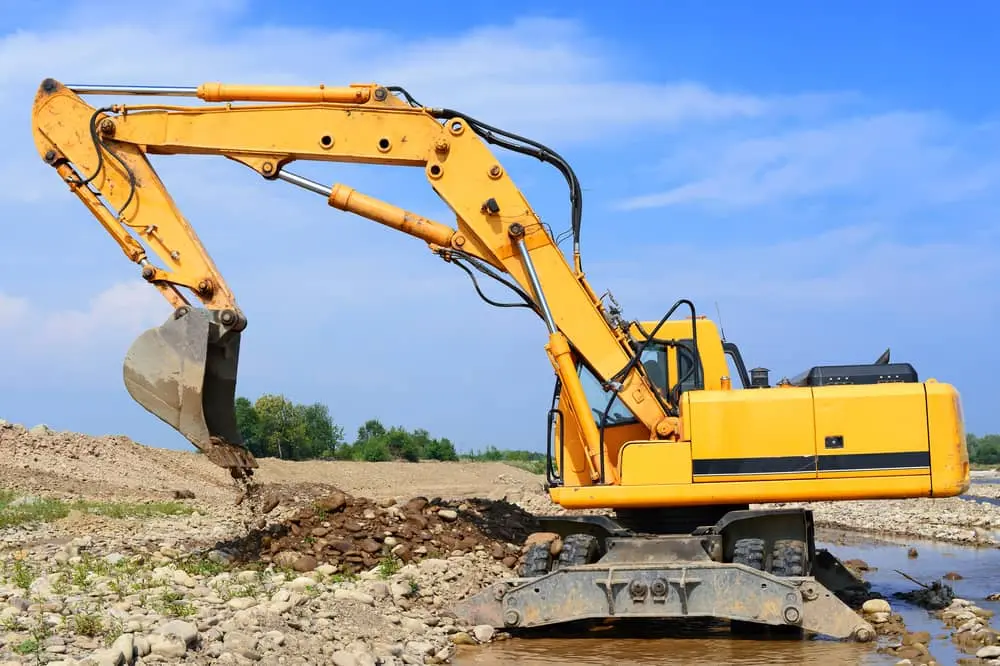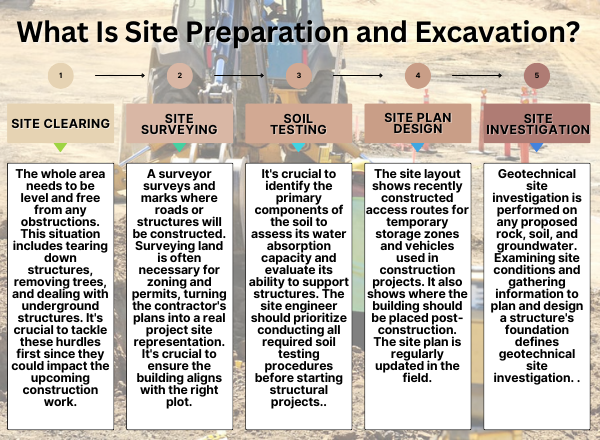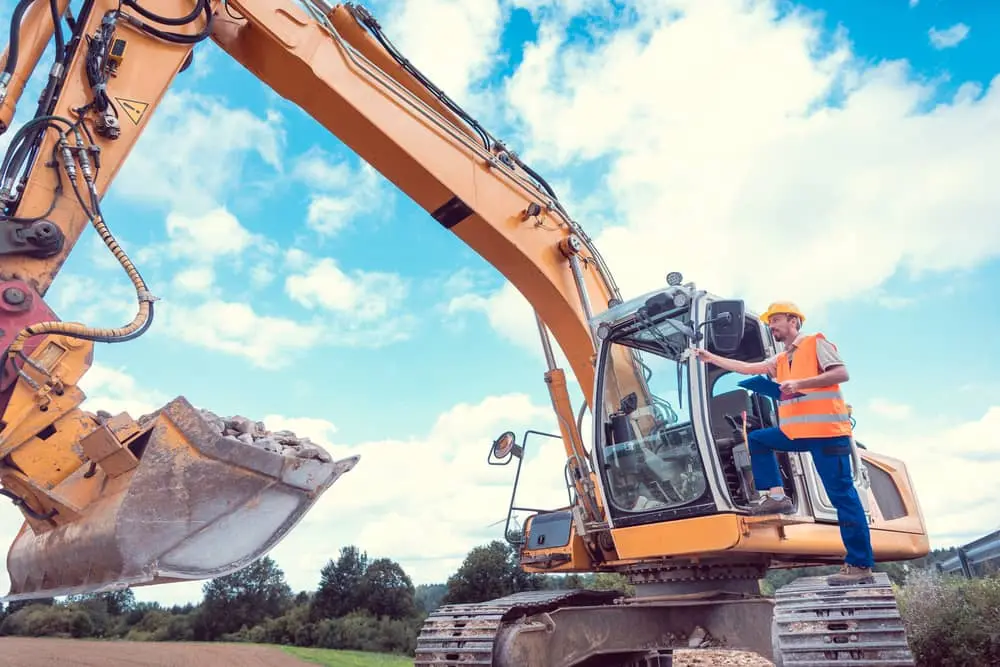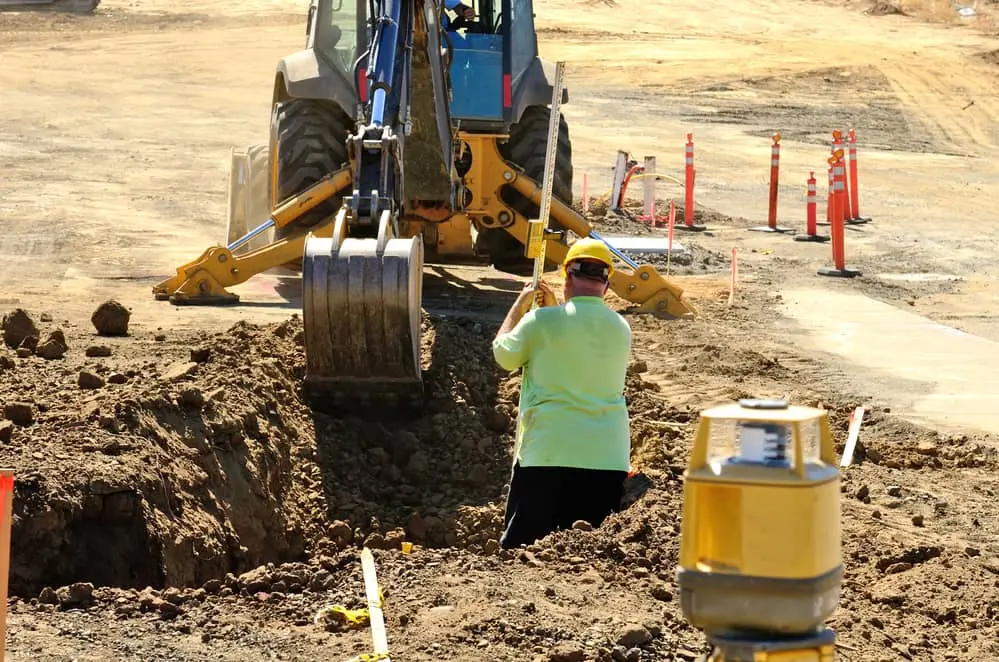
Site preparation is among the initial steps in executing construction work. The selected preparation set-up must be completed before the construction begins.
So, what is site preparation and excavation, and what is the timeline or the process of site prep? In this article, we will guide you through the step-by-step procedure for site preparation and excavation, including the expected timeline, to give you a clearer picture of what you can expect to happen on your property during site preparation and excavation.
Site preparation is an activity that should be done accordingly for other construction activities to begin. The failure and success of site preparation set the conditions and the tone for other on-site construction activities.

The definition of site preparation is already enough to demonstrate the value of this activity to building construction. Also, deploying construction schedule software is highly recommended as it is important during the process.
When you get the site preparation right, everything becomes easier. Getting the site ready is essential if you have to build a structure in a certain spot with many pipes below. Having the site prepared further helps contractors in figuring out where to dig and zones to avoid.
This helps avoid problems like pipes bursting underground. Applying project management in construction is just as important. It reduces potential errors and delays that could result in expensive revisions.
Below are the five necessary steps to implement site preparation for construction projects.
Getting the site ready is the initial phase in preparing the site. The whole area needs to be level and free from any obstructions. This situation includes tearing down structures, removing trees, and dealing with underground structures.
It's crucial to tackle these hurdles first since they could impact the upcoming construction work. If clearing the site doesn't go well, it could pose risks during the project's completion. Therefore, it should be given top priority once and for all.
Check if you're on the correct plot by verifying the survey pegs. A surveyor surveys and marks where roads or structures will be constructed. Surveying land is often necessary for zoning and permits, turning the contractor's plans into a real project site representation. It's crucial to ensure the building aligns with the right plot.
Checking the soil is a vital task that needs to be completed before acquiring the site. It's crucial to identify the primary components of the soil to assess its water absorption capacity and evaluate its ability to support structures. The site engineer should prioritize conducting all required soil testing procedures before starting structural projects.

After checking the soil, install the necessary septic tanks and drainage. Then, modify the design to show where fixtures and septic tanks go. Keep a permanent record of the underground areas. A construction site is like a living thing; it changes daily with slight adjustments to water tank placements.
Changes often occur due to underground rock formations. A crew scheduler superior proves helpful in site plan design.
Moreover, the site layout shows recently constructed access routes for temporary storage zones and vehicles used in construction projects. It also shows where the building should be placed post-construction. Unlike other steps in site preparation, revisions happen in the office, and the site plan is regularly updated in the field.
Geotechnical site investigation is performed on any proposed rock, soil, and groundwater. Examining site conditions and gathering information to plan and design a structure's foundation defines geotechnical site investigation. Examples include parking lots, bridges, roads, and buildings. Effective management and strategic planning in geotechnical site investigation are crucial for obtaining accurate site information. Typically, this information is utilized in the design of structures, minimizing unexpected challenges in effort and estimates. The three stages to consider in geotechnical investigations include report preparation and geotechnical data collection.
So, how long is site preparation? Site preparation for most residential building projects will take 1-2 months. For multi-commercial projects, the timeline can be slightly longer, depending on the project size.

Excavation involves moving earth, rocks, or other materials using tools, equipment, or explosives. It encompasses earthwork, trenching, wall shafts, tunneling, and work underground. Excavation serves various purposes: exploration, environmental restoration, mining, and construction. Construction stands out as one of its most prevalent applications. In construction, excavation creates foundations, reservoirs, and roads.
Different excavation methods include trenching, digging, dredging, and site development. Each method demands specific techniques, tools, and machinery for successful completion. The choice of method hinges on the structure arising from the construction process.
First, we must check the site thoroughly before starting the excavation and heavy earthworks. This ensures that the natural habitat and artifacts around it stay safe during excavation. After that, we create plans specifying the size and depth of the site. Excavation contractors then use these plans to draw boundaries for the excavation site. Only after completing these crucial steps can we finally start the excavation work.
This type of excavation is related to the bridge construction and centers on removing any materials that might impede the construction of the foundations, substructures, and so on required to support the bridge.
During various excavation activities, materials get extracted to clear space for construction. On the contrary, borrowing excavation involves obtaining materials such as soil or gravel from a designated "borrowed" pit, also known as a sandbox, for use elsewhere. These materials might be employed in tasks like grading, filling, or blending with other construction materials, such as concrete, as an illustration.
Digging channels means taking out stuff from channels, drainage ditches, and the like for various reasons. Usually, it alters how water moves or makes it hold more. This might help with floods, stop things from getting stuck, and reduce the amount of sediment.
Getting rid of water from places is what we mean by drainage. This involves ditches, trenches, storm drains, agricultural drainage, drainage for runoff, and similar structures linked to this process. Excavating these ditches is necessary to guide water away from places where people live, the stuff we build, farms, and other areas that might suffer harm.
Sediment builds up in waterways over time, blocking their path. Dredging, an underwater excavation mainly in rivers or shallow sea routes (or similar water bodies), clears sediment to different spots, allowing boats to move freely.
This classification of excavation focuses on the substance being dug rather than the reason for it. It involves removing soil (beneath the topsoil) and applies to digging for a building foundation, creating a drainage trench, or any construction or engineering job.
Footings provide foundational support for structures like buildings and bridges, ensuring that the weight above is evenly distributed to prevent sinking or collapsing. After grading a building site, excavation work begins for footings. This excavation is often more precise since it involves pouring concrete for the footings, which is then allowed to set.
Like earth excavation, this type focuses on materials like muck or a mix of water and soil. Muck consists of unwanted water and soil, possibly contaminated or with excessive water content, making an area impassable. Excavation is employed to relocate the muck or spread it to allow the soil to dry.
Excavation related to roads can serve various purposes. For instance, materials dug up might get relocated to clear space for road building. Still, these materials could also be utilized in constructing the road, like forming embankments. Occasionally, unsuitable slope materials will be dug up and taken away, and different materials will be brought in to replace them.
Rock excavation involves removing materials from rocky surfaces hindering construction or engineering projects. This excavation type is often seen as more demanding than others and may need specialized equipment to break up and eliminate rocks before a project can move forward.
Stripping involves clearing a broad area rather than digging a pit or trench. Before starting construction or engineering projects, it might be necessary to clear an area of topsoil, sand, gravel, rocks, and so on, and grading may be required. In these situations, excavation involves clearing large, shallow sections of material.

This distinction with stripping is important because stripping is the excavation method for removing topsoil. However, this excavation type is focused on topsoil, which includes vegetation and the upper layer of soil.
Excavations of this kind happen beneath the surface instead of above it. This means different tools, gear, and methods might be necessary to remove materials safely and efficiently. Vertical or diagonal shafts and horizontal tunnels are often dug to construct roadways, subways, canals, sewage systems, or other underground passages, among other purposes.
Constructing excavations demands experience, skill, and meticulous attention to detail since it involves large structures and establishes the foundation for the whole project. Heavy industrial contractors employ advanced techniques, tools, and machinery to ensure the job is carried out accurately. Opting for a heavy industrial contractor for significant excavation projects will produce the most favorable outcomes.
Picking a heavy industrial contractor who values safety, is well-known for quality work, and has experience in excavation construction will give you the best results for your large excavation project.